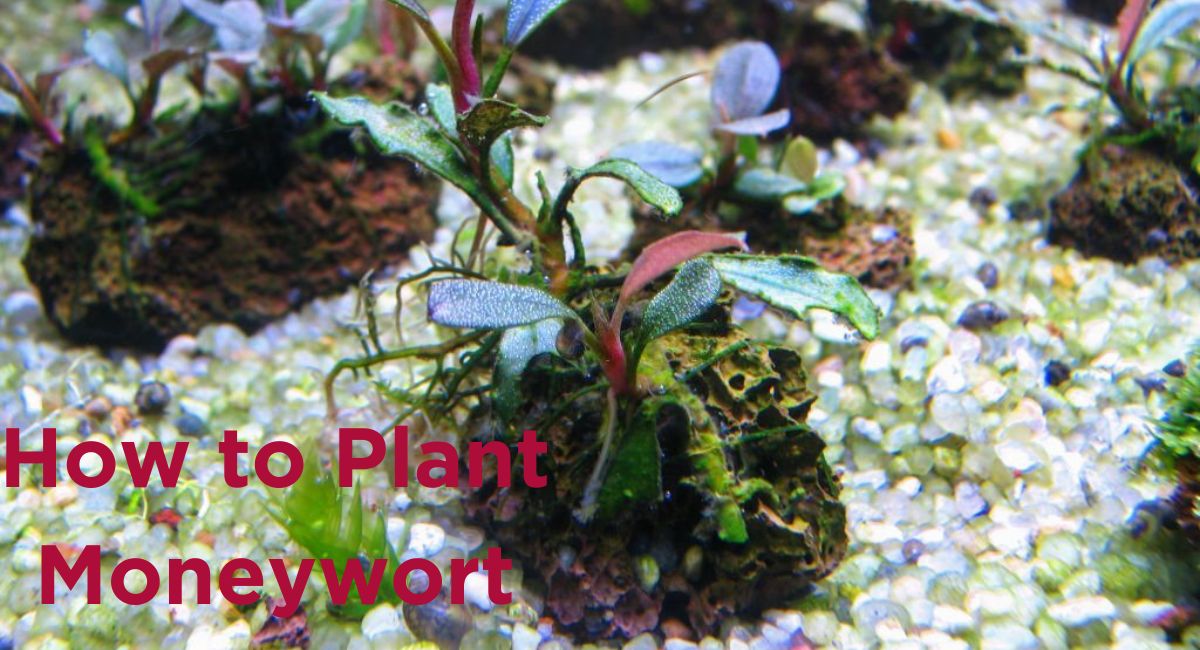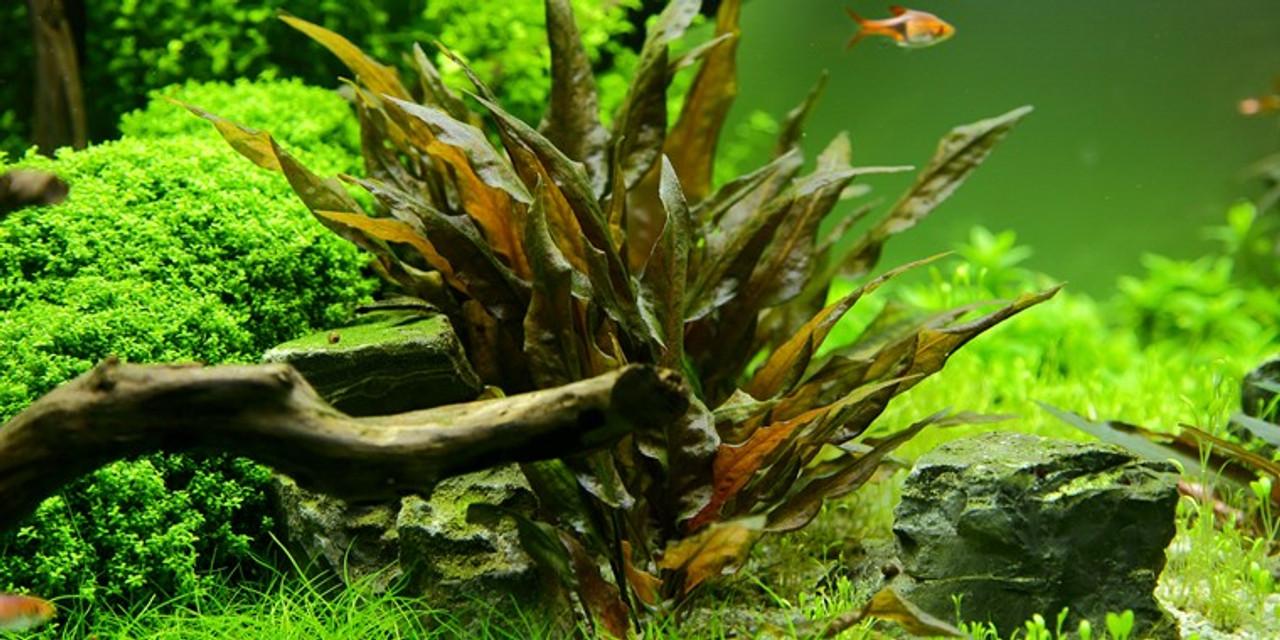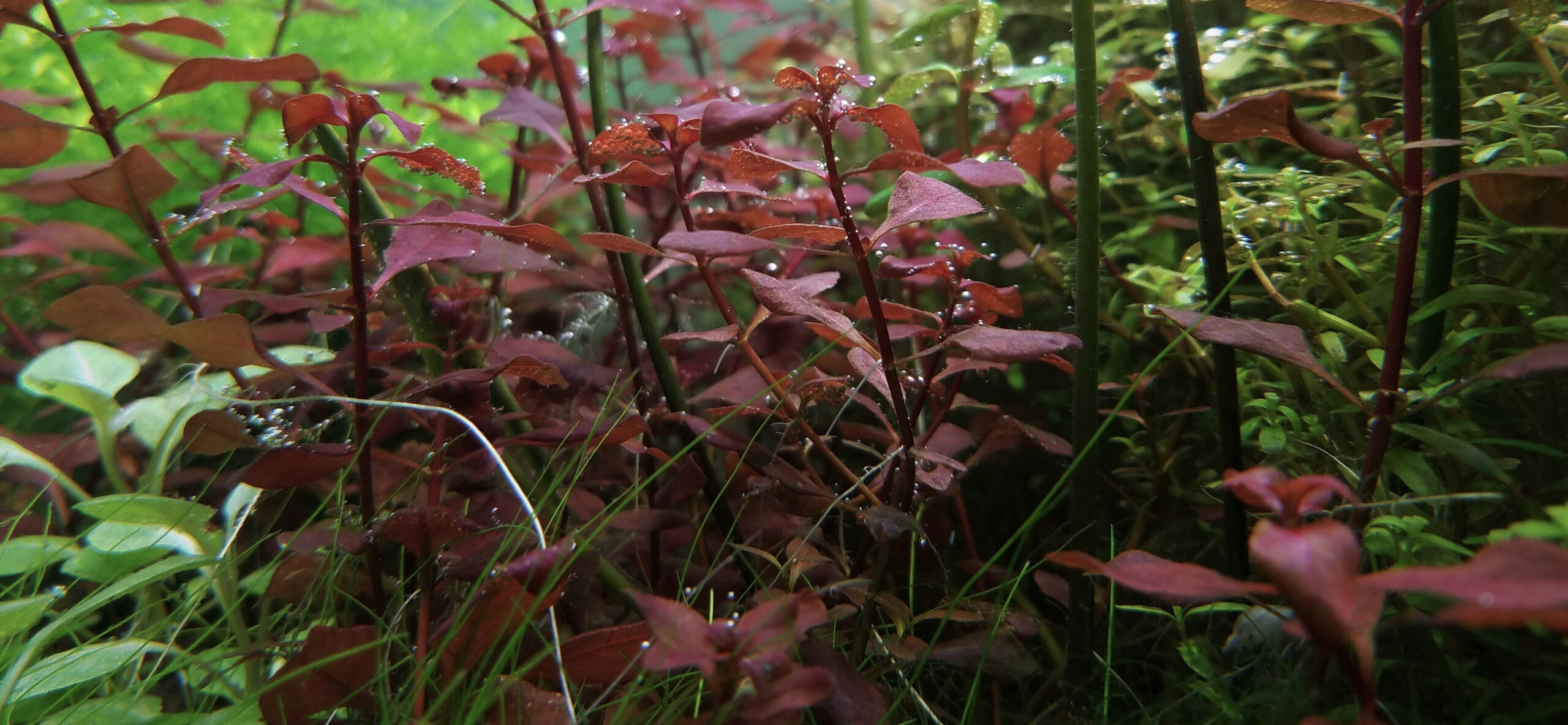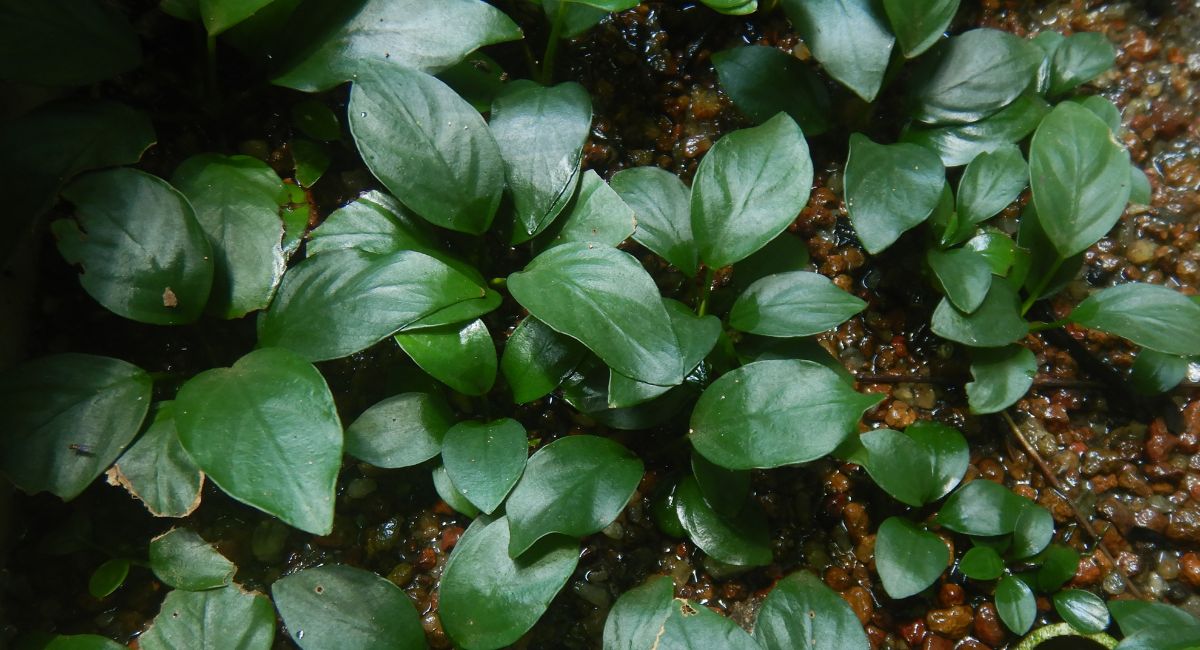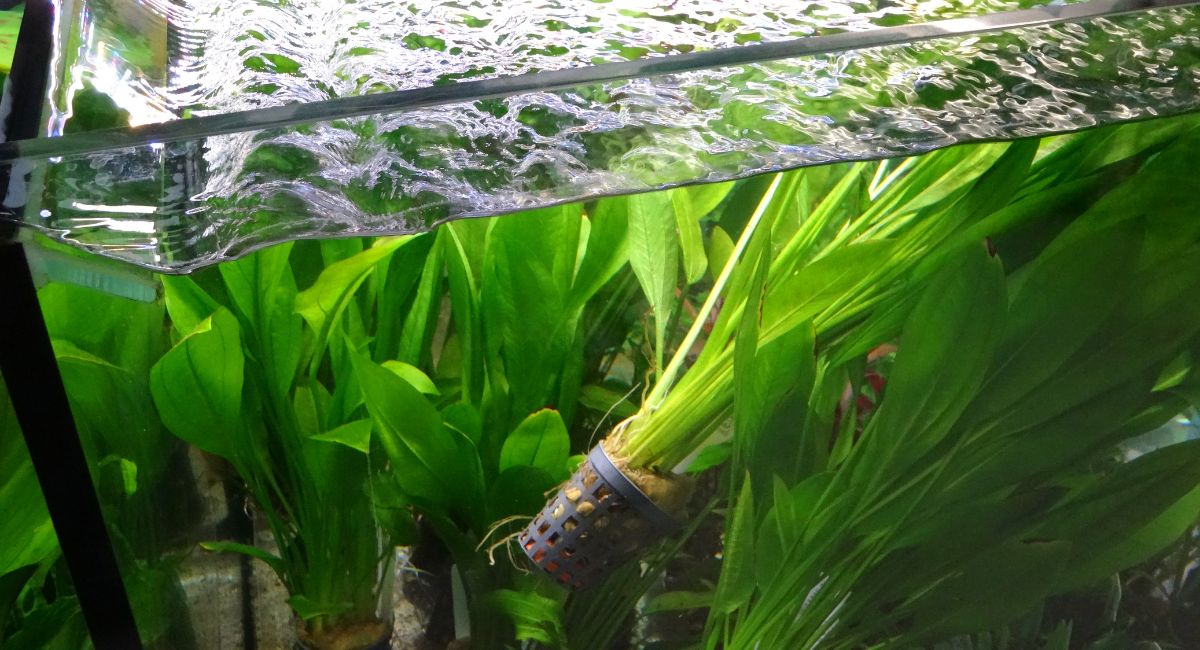Smartplantedaquarium.com participates in affiliate marketing programs. We may earn commissions on purchases made through our affiliate links. This doesn't affect our content or recommendations and we only recommend products we would put in our own tanks.
Welcome to our comprehensive guide on how to plant moneywort, a delightful and versatile aquatic plant that can breathe new life into your garden, aquarium, or pond. Whether you’re a seasoned gardener or a novice green thumb, moneywort, also known as Bacopa monnieri, offers an excellent opportunity to add a touch of natural beauty to your space.
In this article, we will walk you through the step-by-step process of planting and caring for moneywort, covering essential tips and best practices to ensure your moneywort thrives in its new environment.
Whether you wish to adorn your living space with a splash of greenery or create an enchanting underwater landscape, let’s dive into the world of moneywort and learn how to plant and nurture this delightful aquatic gem. Let’s get started on this rewarding journey of bringing nature’s charm into your surroundings with the alluring moneywort plant.
Contents
Overview of Moneywort
Moneywort boasts not only a captivating aesthetic but also serves as an excellent ground cover option for those seeking a lush, green carpet effect in their gardens. Its adaptability makes it equally well-suited for indoor aquatic environments, such as aquariums and water features, as well as outdoor ponds and water gardens.
Description and Appearance:
Moneywort, scientifically known as Bacopa monnieri, is an enchanting and versatile plant that belongs to the Scrophulariaceae family. Renowned for its lush green foliage and captivating appearance, moneywort is a popular choice for both indoor and outdoor gardening enthusiasts. This perennial herbaceous plant is characterized by its small, oval-shaped leaves that grow opposite each other along the stem, creating a delightful carpet-like effect when planted in abundance. The leaves are glossy and range in color from bright green to a slightly reddish hue, adding a touch of vibrancy to any environment.
Origin:
Native to wetlands and marshy areas in Asia, particularly in regions with tropical and subtropical climates, moneywort has been cherished for centuries for its medicinal and ornamental properties. Traditionally, it has been used in Ayurvedic medicine for its potential health benefits, including memory enhancement and stress reduction. Over time, its popularity as a decorative plant has grown, leading to its introduction and cultivation in various parts of the world.
Different Types of Moneywort:
Several species of Bacopa fall under the common name “moneywort.” Each variety offers unique characteristics and growth habits, catering to different preferences and gardening requirements. Some of the popular types of moneywort include:
- Bacopa monnieri: This is the most widely recognized and cultivated variety of moneywort, valued for its adaptability and resilience. It is commonly found in aquariums, water gardens, and as ground cover in garden landscapes.
- Bacopa caroliniana: Also known as lemon bacopa, this variety displays a lemony fragrance when touched. It is often used as a decorative plant in water gardens, where its small, light green leaves create an enchanting aquatic setting.
- Bacopa australis: This species is admired for its creeping growth pattern, making it an excellent choice for ground cover in moist areas. Its vibrant green leaves bring life to ponds and boggy landscapes.
- Bacopa myriophylloides: With its delicate, feathery foliage, this moneywort species is a visual delight. It thrives in both terrestrial and aquatic environments and is well-suited for containers and hanging baskets.
Benefits of Keeping Moneywort in Aquariums
- Water Purification: Moneywort, also known as Bacopa monnieri, is an excellent aquatic plant that contributes to water purification in aquariums. Through a process called nutrient uptake, moneywort absorbs excess nutrients like nitrates and phosphates that can lead to algae growth. By reducing these nutrients, it helps maintain a healthier and cleaner aquatic environment for your fish and other tank inhabitants.
- Oxygenation: Like other aquatic plants, moneywort plays a vital role in oxygenating the water. During photosynthesis, the plant absorbs carbon dioxide and releases oxygen, providing a steady supply of this essential gas for fish and other aquatic organisms. This increased oxygenation contributes to the overall well-being and vitality of the aquarium’s inhabitants.
- Natural Habitat Enrichment: In the wild, many fish species inhabit areas with abundant aquatic vegetation, such as moneywort. Keeping moneywort in your aquarium mimics the natural environment of some fish, providing them with a sense of security and comfort. It encourages natural behaviors and reduces stress levels in the fish, promoting better health and overall happiness.
- Aesthetic Appeal: Moneywort’s lush green foliage and delicate appearance add an enchanting touch to any aquarium. It enhances the visual appeal of the tank, creating a beautiful underwater landscape. When arranged creatively, moneywort can be used as a background or a mid-ground plant to add depth and dimension to the aquarium’s design.
- Breeding Grounds: In aquariums with breeding fish, moneywort can serve as an ideal location for spawning. The dense foliage offers protection for fish eggs and fry, increasing their chances of survival. Additionally, the plant’s soft leaves create a gentle surface for the eggs to attach to, preventing damage that may occur on hard surfaces.
- Easy to Care for: Moneywort is known for its adaptability and ease of care. It can thrive in a wide range of water conditions, including low to moderate light levels and a variety of water hardness levels. This makes it an excellent choice for beginner and experienced aquarium enthusiasts alike.
- Low Maintenance Propagation: Propagating moneywort is relatively straightforward. Through stem cuttings, you can quickly grow new plants, allowing you to expand the greenery in your aquarium or share it with fellow aquarists.
Required Equipment and Supplies
To successfully plant and care for moneywort, you’ll need a few essential equipment and supplies to create an ideal environment for this aquatic plant to thrive. Below is a list of the items you’ll need:
| Equipment and Supplies |
|---|
| 1. Aquarium or Pond |
| 2. Substrate |
| 3. Lighting |
| 4. Water Quality Test Kit |
| 5. Water Conditioner |
| 6. Fertilizer |
| 7. Aquarium Heater |
| 8. Aquarium Filter |
| 9. Scissors or Pruning Tools |
| 10. Fish or Invertebrates (optional) |
| 11. Watering Can or Spray Bottle |
- Aquarium or Pond: For indoor setups, you’ll need an aquarium with adequate space to accommodate the moneywort plants and other aquatic life. If you’re planning to grow moneywort in an outdoor pond, ensure it is appropriately sized and located to receive sufficient sunlight.
- Substrate: Choose a suitable substrate for the aquarium or pond. Moneywort can be planted directly into the substrate, and options like aquatic soil or sand work well. The substrate should be nutrient-rich to support healthy plant growth.
- Lighting: Moneywort requires moderate to high levels of light to grow well. For indoor aquariums, invest in a good-quality aquarium light that provides the appropriate spectrum and intensity. In outdoor ponds, ensure the area receives sufficient sunlight throughout the day.
- Water Quality Test Kit: To maintain optimal water conditions for moneywort, use a water quality test kit to monitor parameters like pH, ammonia, nitrite, and nitrate levels. Moneywort thrives in water with stable and balanced parameters.
- Water Conditioner: Use a water conditioner to remove harmful chemicals, such as chlorine and chloramine, from tap water before adding it to the aquarium or pond.
- Fertilizer: Moneywort benefits from a nutrient-rich environment. Consider using a liquid or substrate fertilizer formulated for aquarium or pond plants to provide essential nutrients.
- Aquarium Heater (for indoor setups): If you’re growing moneywort indoors in a tropical aquarium, a heater may be necessary to maintain the water temperature within the appropriate range.
- Aquarium Filter (for indoor setups): An aquarium filter helps maintain water clarity and quality by removing debris and waste, which can be beneficial for both moneywort and the overall ecosystem.
- Scissors or Pruning Tools: Moneywort may require occasional trimming to control its growth and maintain a tidy appearance. Pruning tools will be handy for this purpose.
- Fish or Invertebrates: Moneywort can coexist with many species of fish and invertebrates. Consider adding compatible aquatic life to create a harmonious and balanced ecosystem.
- Watering Can or Spray Bottle: If you’re growing moneywort as a ground cover plant in a garden, a watering can or spray bottle can be used to water the plants gently.
How to Plant Moneywort
Step 1: Prepare the Aquarium
- Clean the Aquarium: Before planting moneywort, ensure the aquarium is clean and free from debris. Rinse the tank and remove any dirt or residues.
- Add Substrate: Fill the aquarium with an appropriate substrate, such as aquatic soil or sand, to anchor the moneywort’s roots.
- Install Aquarium Equipment: Set up the aquarium heater, filter, and lighting according to the needs of your fish and other aquatic inhabitants.
- Fill with Water: Fill the aquarium with dechlorinated water to the desired level, ensuring it covers the substrate and provides sufficient space for planting.
Step 2: Planting Moneywort
- Trim the Stems: Trim the moneywort stems if they are too long or tangled to facilitate easy planting and encourage healthy growth.
- Planting Depth: Insert the trimmed stems into the substrate at least 1-2 inches deep to ensure proper rooting and stability.
- Planting Spacing: Leave a few inches of space between each moneywort stem to allow adequate growth and prevent overcrowding.
- Bury Roots Gently: Cover the roots with the substrate while being careful not to crush or damage them during the planting process.
Step 3: Provide Ideal Conditions
- Lighting: Ensure your aquarium receives moderate to high lighting, as moneywort thrives in well-lit environments. Adjust the aquarium light to the recommended spectrum and duration for optimal growth.
- Water Quality: Maintain stable and balanced water parameters, including pH, ammonia, nitrite, and nitrate levels, as moneywort prefers clean and nutrient-rich water.
- Fertilization: If necessary, supplement the aquarium with a liquid or substrate fertilizer formulated for aquatic plants to provide essential nutrients for healthy growth.
- Temperature: Keep the water temperature within the suitable range for the specific type of moneywort you have. Tropical moneywort species prefer warmer temperatures, while other varieties may tolerate cooler conditions.
Step 4: Regular Maintenance
- Pruning: Regularly trim overgrown stems to control the height and density of the moneywort. Use sharp scissors to cut just above a node to encourage branching.
- Propagation: As moneywort grows, it will develop side shoots that can be easily propagated. Cut healthy stem cuttings and replant them in the substrate to expand your moneywort coverage.
- Water Changes: Conduct routine partial water changes to maintain water quality and remove accumulated waste. This helps prevent nutrient imbalances and keeps the aquarium environment healthy.
- Monitor Plant Health: Keep an eye on the moneywort’s condition, looking for signs of discoloration, wilting, or pest infestations. Address any issues promptly to ensure the plant remains vibrant and healthy.
Step 5: Coexistence with Aquatic Life
- Fish Compatibility: Consider the types of fish and other aquatic creatures in your aquarium to ensure they are compatible with moneywort. Peaceful and herbivorous fish species generally coexist well with this plant.
- Shelter for Fish: Moneywort provides a natural hiding place for small fish and fry, creating a sense of security and reducing stress in the aquarium.
- Avoid Overcrowding: Avoid overcrowding the aquarium with too many fish or plants, as this can lead to competition for resources and hinder moneywort growth.
- Observe Behavioral Changes: Monitor your fish’s behavior around the moneywort to ensure they are not excessively uprooting or damaging the plants. Adjust the layout if necessary to create a harmonious balance.
Step 6: Algae Control
- Light Duration: Limit the aquarium’s light exposure to around 8-10 hours per day to prevent excessive algae growth, as prolonged light exposure can promote algae blooms.
- Manual Removal: Regularly inspect the moneywort and remove any visible algae from its leaves and stems to maintain its aesthetic appeal and prevent algae from taking over.
- Algae-Eating Species: Consider adding algae-eating fish or invertebrates, such as certain species of snails or shrimp, to help control algae growth in the aquarium.
- Balance Nutrient Levels: Properly fertilize the moneywort and control nutrient levels in the water to discourage algae growth. Balanced nutrients help the moneywort thrive while limiting excess nutrients that fuel algae.
Step 7: Water Care and Conditioning
- Regular Water Testing: Conduct frequent water quality tests to monitor the levels of ammonia, nitrites, nitrates, and pH. Regular testing helps you detect any fluctuations or imbalances that may affect the moneywort’s health.
- Water Changes: Perform regular partial water changes, typically around 20-30% of the total volume, to remove accumulated pollutants and maintain stable water conditions. Changing the water will also help replenish essential minerals and nutrients.
- Temperature Control: Keep the water temperature stable within the recommended range for your moneywort species. Sudden temperature fluctuations can stress the plant and hinder its growth.
- Dechlorination: Always treat tap water with a water conditioner that removes chlorine, chloramine, and heavy metals before adding it to the aquarium. Chlorine and chloramine can harm both the moneywort and aquatic life.
Step 8: Disease Prevention and Pest Control
- Quarantine New Additions: Quarantine any new fish, plants, or equipment before introducing them to the main aquarium. This helps prevent the spread of potential diseases and pests to the established ecosystem.
- Observe Plant Health: Regularly inspect the moneywort for signs of diseases or pest infestations, such as discoloration, wilting, or unusual growth patterns. Early detection allows for timely intervention.
- Isolate and Treat: If you notice any signs of disease or pests, promptly isolate the affected plant and treat it with appropriate remedies. Avoid using chemical treatments that could harm other aquatic life.
- Snail Control: Monitor for excessive snail populations, as some snail species may eat moneywort leaves. Use manual removal methods or consider introducing snail-eating fish or snail traps if necessary.
Step 9: Aesthetic Arrangement
- Background or Foreground: Depending on your aquarium’s layout, position the moneywort as either a background or foreground plant. Tall moneywort varieties work well as background accents, while shorter ones suit the foreground.
- Create Visual Depth: Arrange moneywort along with other plants and decorations to create visual depth and interest in the aquarium. Experiment with different heights and colors to achieve an appealing layout.
- Balanced Planting: Avoid overcrowding the aquarium with moneywort or other plants. Allow sufficient space for each plant to grow and expand while maintaining a balanced and visually pleasing arrangement.
- Regular Maintenance: Trim and prune the moneywort as needed to maintain its shape and prevent it from overshadowing other plants or obstructing the view of your fish and aquarium features.
Mistakes to Avoid When Planting Moneywort
Avoiding common mistakes when planting moneywort can help ensure its successful growth and overall health. Here are some key mistakes to steer clear of:
| Mistakes to Avoid When Planting Moneywort |
|---|
| 1. Planting Too Deep |
| 2. Overcrowding |
| 3. Neglecting Water Quality |
| 4. Insufficient Lighting |
| 5. Using Chemicals Unfit for Aquatic Plants |
| 6. Overfertilization |
| 7. Ignoring Pests and Diseases |
| 8. Rapid Changes in Water Temperature |
| 9. Incompatible Tankmates |
| 10. Using Sharp Substrate |
| 11. Poor Pruning Techniques |
- Planting Too Deep: Avoid planting moneywort too deep in the substrate. Planting it too deep can hinder its ability to receive light and nutrients, leading to weak growth or even decay.
- Overcrowding: Planting too many moneywort stems in a confined space can result in overcrowding. Adequate spacing between stems allows each plant to receive sufficient light and nutrients, promoting healthier growth.
- Neglecting Water Quality: Moneywort is sensitive to changes in water quality. Neglecting regular water testing and water changes can lead to imbalances in nutrient levels and pH, negatively impacting the plant’s health.
- Insufficient Lighting: Inadequate lighting can impede moneywort’s growth. Ensure the aquarium or pond receives enough light, preferably with a spectrum suitable for aquatic plants, to support its photosynthesis process.
- Using Chemicals Unfit for Aquatic Plants: Avoid using chemicals, fertilizers, or medications not specifically formulated for use with aquatic plants. Some substances can be harmful to moneywort and other aquatic life.
- Overfertilization: Applying excessive amounts of fertilizer can lead to nutrient imbalances and potentially harm the moneywort. Follow the recommended dosage and schedule for fertilization.
- Ignoring Pests and Diseases: Neglecting to monitor for pests and diseases can result in severe damage to moneywort. Regularly inspect the plant and take immediate action if any issues are detected.
- Rapid Changes in Water Temperature: Avoid sudden changes in water temperature, as moneywort is sensitive to fluctuations. Gradually acclimate the plant to new water conditions to prevent stress.
- Incompatible Tankmates: Some fish species may uproot or damage moneywort. Research the compatibility of your aquarium inhabitants with moneywort before introducing them to the tank.
- Using Sharp Substrate: If the substrate is sharp or rough, it can damage the delicate roots of moneywort. Choose a smooth substrate or sand that is gentle on the plant’s roots.
- Poor Pruning Techniques: Improper pruning can damage the plant and inhibit its growth. Always use sharp, clean scissors or pruning tools and trim moneywort stems just above a node to promote branching.
How to Use Moneywort for Aquascaping
Using moneywort (Bacopa monnieri) for aquascaping can add a touch of natural beauty and elegance to your aquarium. Its lush green foliage and versatility make it a valuable addition to various aquascape styles. Here’s how you can effectively use moneywort for aquascaping:
| How to Use Moneywort for Aquascaping |
|---|
| 1. Background Planting |
| 2. Midground Accent |
| 3. Foreground Carpet |
| 4. Create Layers |
| 5. Cascading Effect |
| 6. Framing the Focal Point |
| 7. Emphasizing Color Contrasts |
| 8. Floating Plant Accent |
| 9. Vivarium and Paludarium Integration |
| 10. Controlled Trimming |
- Background Planting: Moneywort’s fast growth and ability to reach considerable heights make it an excellent choice for background planting. Plant moneywort along the back of the aquarium to create a lush and vibrant backdrop for the entire aquascape.
- Midground Accent: In medium-sized aquariums, use moneywort as a midground plant to add depth and dimension. Position it slightly behind the focal point plants to create a natural transition between foreground and background elements.
- Foreground Carpet: If you have a larger aquarium, consider using moneywort as a foreground carpet. Trim the stems short and plant them close together to create a dense, green carpet effect. This will provide a beautiful contrast to other plants and hardscape elements in the aquarium.
- Create Layers: Moneywort’s versatility allows it to be used in various layers of the aquascape. Combine it with other plants of different heights and textures to create layers that add visual interest and depth to the overall layout.
- Cascading Effect: Moneywort’s flexible stems can be arranged to cascade over rocks or driftwood, giving your aquascape a natural and organic feel. This technique is especially effective in creating a sense of movement in the underwater landscape.
- Framing the Focal Point: Use moneywort to frame the central focal point of your aquascape. Placing moneywort around the main hardscape or centerpiece plant draws attention to the focal point and adds a harmonious touch to the design.
- Emphasizing Color Contrasts: Moneywort’s vibrant green color can be used to emphasize color contrasts in the aquascape. Pair it with plants or hardscape elements of contrasting colors, such as red or purple, to create a visually striking composition.
- Floating Plant Accent: In aquariums with open water areas, allow some moneywort stems to float near the water’s surface. The floating stems can provide shade and shelter for fish while adding a beautiful touch to the overall layout.
- Vivarium and Paludarium Integration: If you have a vivarium or paludarium setup, moneywort can adapt to semi-aquatic conditions. It can be planted in the aquatic section and allowed to grow out of the water, providing a seamless transition between the aquatic and terrestrial environments.
- Controlled Trimming: Regularly trim moneywort to maintain its desired shape and prevent it from overshadowing other plants. Prune the stems just above a node to encourage branching and bushier growth.
Conclusion
Planting Moneywort (Bacopa monnieri) can be a rewarding and enjoyable experience for both beginners and experienced aquarists alike. This versatile aquatic plant offers numerous benefits, from its striking appearance and rapid growth to its ability to enhance water quality and provide a natural habitat for fish and other aquatic inhabitants.
By following the step-by-step guide on how to plant Moneywort, aquarists can create captivating aquascapes or lush water gardens that add a touch of nature’s beauty to their underwater world. The ease of maintenance, adaptability to various conditions, and compatibility with a wide range of fish species make Moneywort an ideal choice for both beginners and seasoned hobbyists.
As with any aquatic plant, providing proper care, including adequate lighting, balanced water parameters, and regular pruning, is essential to ensure the Moneywort thrives and remains a vibrant centerpiece of the aquarium or pond. With attention to detail and a little patience, aquarists can enjoy the lush green foliage and graceful presence of Moneywort, transforming their aquatic space into a mesmerizing and tranquil underwater haven.
Frequently Asked Questions
1. What are the best companion plants for Moneywort?
oneywort, also known as Bacopa monnieri, pairs well with various other aquatic plants that have similar care requirements. Some suitable companion plants for Moneywort include Water Wisteria, Anacharis, Ludwigia species, Java Moss, Cryptocoryne species.
2. What are the best tank mates for Moneywort?
Moneywort is an excellent addition to community aquariums and provides beneficial cover for fish and invertebrates. Suitable tank mates for Moneywort include:
1) Peaceful community fish like Tetras, Rasboras, Guppies, and Corydoras.
2) Shrimp species like Cherry Shrimp or Amano Shrimp.
3) Snails such as Nerite Snails or Mystery Snails.
3.How fast does Moneywort grow?
Moneywort is known for its fast growth rate under optimal conditions. It can grow several inches in just a few weeks, making it an excellent choice for quickly filling in the background or midground of the aquarium.
4. How big does Moneywort grow?
Moneywort can grow to be relatively tall, with its stems reaching up to 12 to 18 inches (30 to 45 cm) in length. Frequent pruning can help maintain a more compact and bushy appearance.
5. Is Moneywort suitable for beginners?
Yes, Moneywort is highly suitable for beginners in the aquarium hobby. It is an undemanding plant and can adapt to a wide range of water parameters. Its fast growth and ease of care make it an excellent choice for newcomers to aquatic plant keeping.
6. Is Moneywort suitable for a low-tech aquarium?
Moneywort is well-suited for a low-tech aquarium setup. It can thrive in tanks without CO2 injection or high-intensity lighting. In fact, it can grow well in moderate to low lighting conditions and will benefit from a nutrient-rich substrate. Therefore, Moneywort is an excellent choice for beginners or hobbyists looking for a low-maintenance and vibrant plant for their aquarium.
